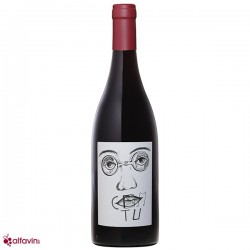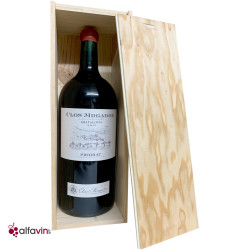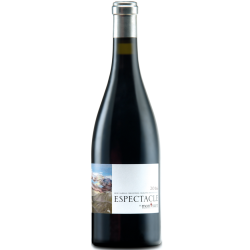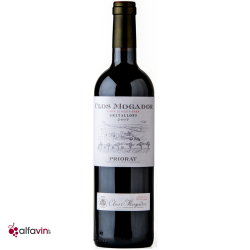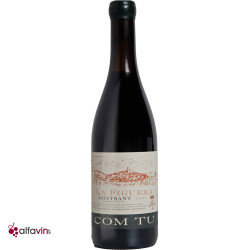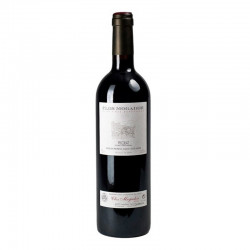With the largest vineyard area in the world, Spain offers from north to south and from west to east, a varied range of wines. Like its Latin neighbors, its history goes back to antiquity. Its evolution and how it appears to us today is the result of the work of the Romans, as in many other regions of Europe as well.
With a harsh climate, hot and dry in summer, cold winters, the Spanish wine regions suffer every year and their yields are often low. Whether you are in the south of France or in Sardinia to name a few places, you will regularly find grape varieties originating from the Iberian Peninsula such as Grenache for example. The diversity of grape varieties grown in Spain is wide and allows for an interesting range of wines. Whether you are in the North West of Spain in Galicia or in the Priorat region near Barcelona or in the south of Spain in Andalusia, the quality of the wines as well as the diversity make this country a first class vineyard.
What are the most famous Spanish wines?
When you sit in the most beautiful gastronomic tables in the world and you have the wine list in hand, Spain is always represented, even if it is often in small quantities. However, if there is one wine region that is making a mark around the world, it is the Ribera del Duero. Located east of Valladolid, this vineyard with an international reputation was however unknown in the 1980s/1990s. Two wineries have made a name for themselves and have acquired a reputation that is no longer to be made. The first and surely the most emblematic is Vega Sicilia. It is one of the oldest wineries since its history began in 1864. With its Unico vintage, often ranked as the best wine in Spain, Unico is composed mainly of Tempranillo, from old vines. With an aging of at least 10 years, and a satiny, racy and elegant wine, Vega Sicilia has made this wine a legend. Another producer that counts in the Ribera del Duero, the Pingus estate. Even if its history is much more recent than its neighbor (since 1995), the estate directed by Peter Sisseck has definitely entered the category of mythical Spanish wines. Thanks to a rigorous work, respecting the traditions of yesteryear, and bringing a biodynamic vision of great quality and intransigence, he has made this estate and its Pingus vintage, a stratospheric wine that has obtained 100 points from Robert Parker on several occasions.
Further east, on the Mediterranean coast, another name in Iberian viticulture has made its mark for its quality and consistency: René Barbier. Considered the man who brought Priorat back to life, he has been working for years on a large scale, combining tradition and modernity. With internationally known wines such as Manyetes, Espectacle and Gratallops, the Clos Mogador is the radiance of a whole region and the winemaker René Barbier is the architect.
How to recognize a Spanish wine?
Knowing how to read a label when you're a wine lover is not always easy; and even for informed consumers the task is not always easy. In order to help you see more clearly, we will review the different categories that currently exist in the land of Don Quijote.
The first one that we find at the bottom of the pyramid is Spanish Wine. Formerly Vin de table, this designation is the least restrictive in terms of quality.
Then we find the PGI (Protected Geographical Indication), European legislation that is gradually replacing the Wines of the Land. This category, unlike the first, imposes slightly stricter rules on yields among others, but often allows winemakers who have wines in higher appellations to have more possibilities and fewer constraints.
Moving up the hierarchy, we find the DO (Denomination of Origin), the equivalent of the AOC (Appellations of Controlled Origin). This classification limits the yields, defines the cultivation practices, the use or not of grape varieties.
Finally, the DOC (Denomination of Controlled Origin), the highest wine distinction in Spain with rules superior to the DO. There are currently two in Spain: La Rioja and Priorat.
To go a little further, consider also 4 mentions that you are likely to find on wine labels. All related to aging, the first, "joven" defines wines often made from young vines and have little or no aging. "Crianza" is used for wines that are aged for a minimum of 2 years, 6 of which in barrels. The term "Reserva" defines wines that have been aged for a minimum of 3 years with at least 12 months in barrels. Finally, "Gran Reserva" is reserved for wines that have been aged for a minimum of 5 years, of which at least 3 years are in barrels.
Which wine to choose to make sangria?
Even if its origin remains controversial; some attribute its relationship to Spain, others to the West Indies, sangria remains the emblematic drink of the kingdom of Spain. Before talking about the wine itself, do you know what sangria is? It is fruit (usually oranges, lemons, apples and pears) that has been macerated for a few hours with red wine, sugar, cinnamon and topped up with soda water or lemonade. Some add a little strong alcohol such as cognac or vodka.
When it comes to red wine, you don't have to take the best wine from your cellar to get the title of best sangria. Always keep in mind that the wine you choose will be mixed with other ingredients, which let's be honest is not its primary purpose. Alfavin.ch advises you to choose quality wines but at a reasonable price (between 8 and 15 francs maximum). Take into account that the structure, the alcohol level of the wine is important. If you want a soft sangria, choose a wine with fresh red fruit aromas and a good freshness. On the contrary, if you wish a more powerful sangria, choose a wine with more density, alcohol. The difference is subtle but it does exist.
The consumption of wines in Spain.
Surprisingly, this country, which has the largest surface area of vineyards in the world and is one of the main producers, is also the one where wine holds a low place in terms of its consumption. Even if the vineyards are of good quality, the Spanish culture around wine is weak, and the locals prefer to drink beer. A study has even shown that between the end of the 1990s and 2010, the consumption would have dropped by 40%.
You don't know everything yet, but you already know a bit more. Spain has a wealth of wine to offer you and as in any other country, there is something for every taste.
Greetings gourmets,
The Alfavin.ch team
Find all our articles about Spanish wines:
Top 10 of the best Spanish wines
All about Spanish wines
Which Spanish wine for which dish? Alfavin.ch gives you its ideas!
Our wines linked to this post
Clos Mogador 2021 5 liters
Clos Mogador 2015 12 liters
- Highlight




